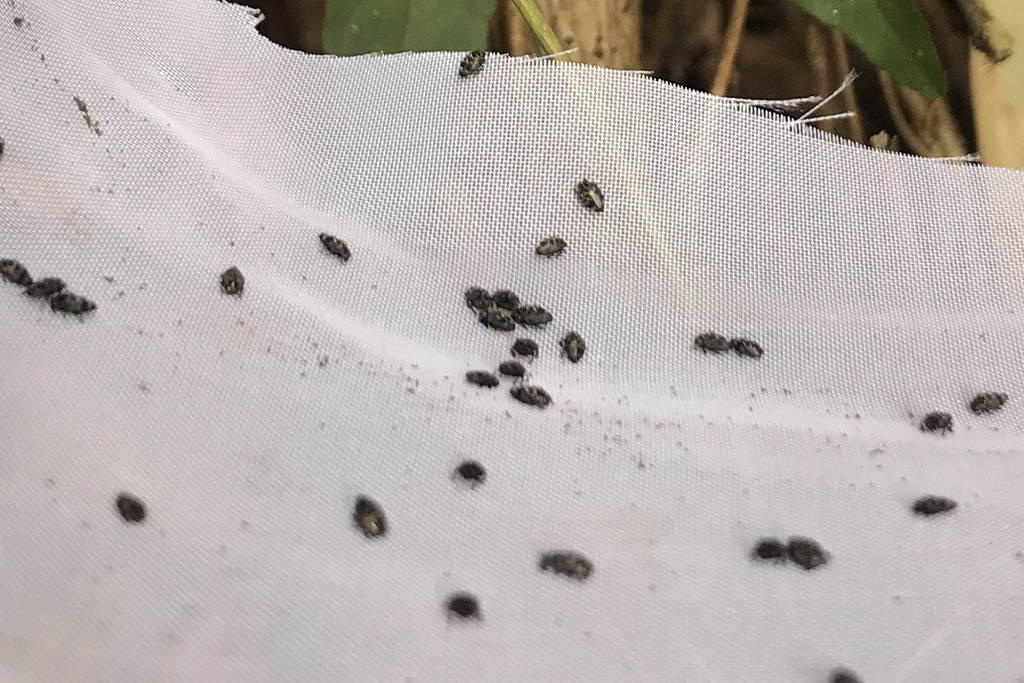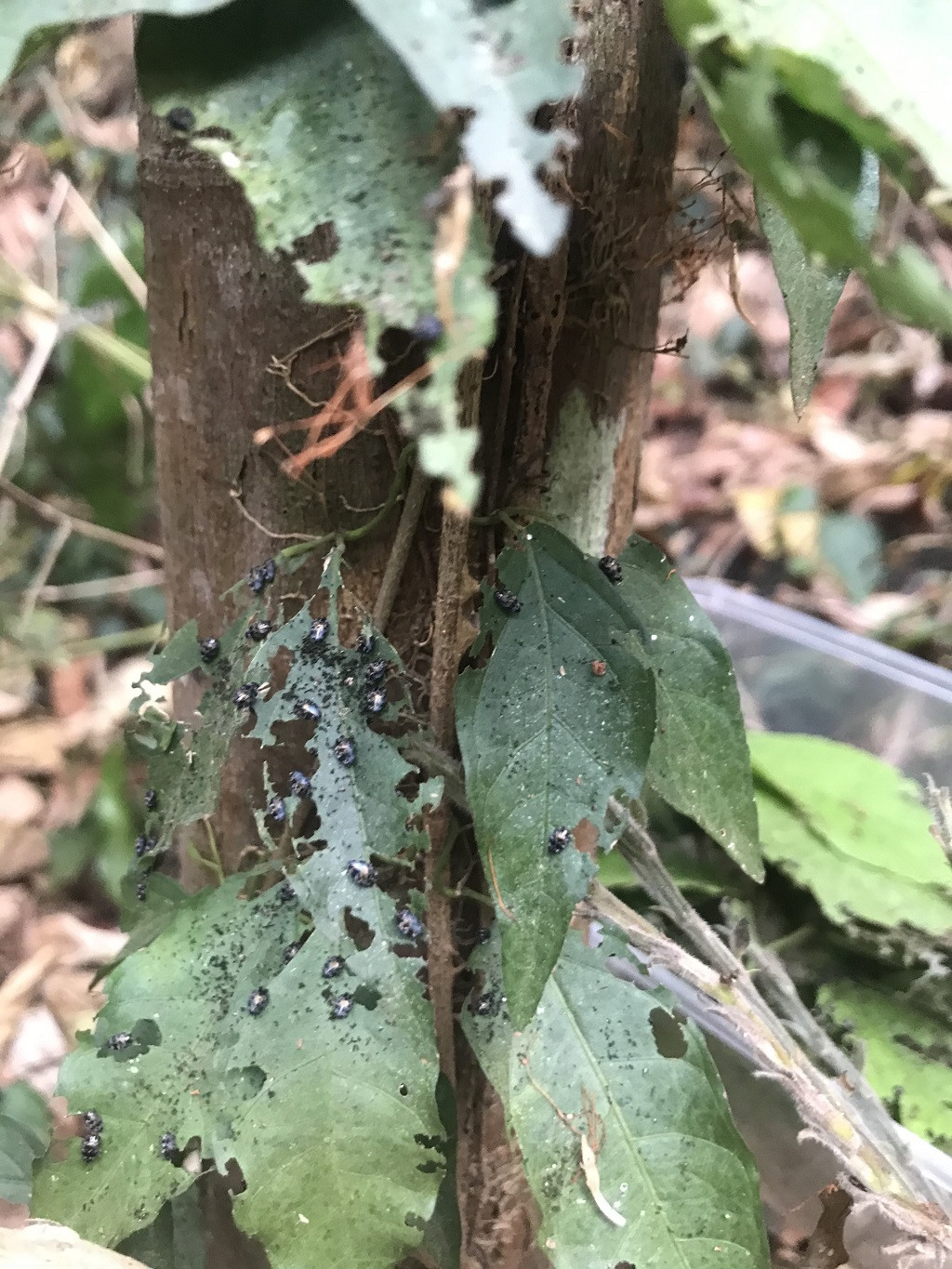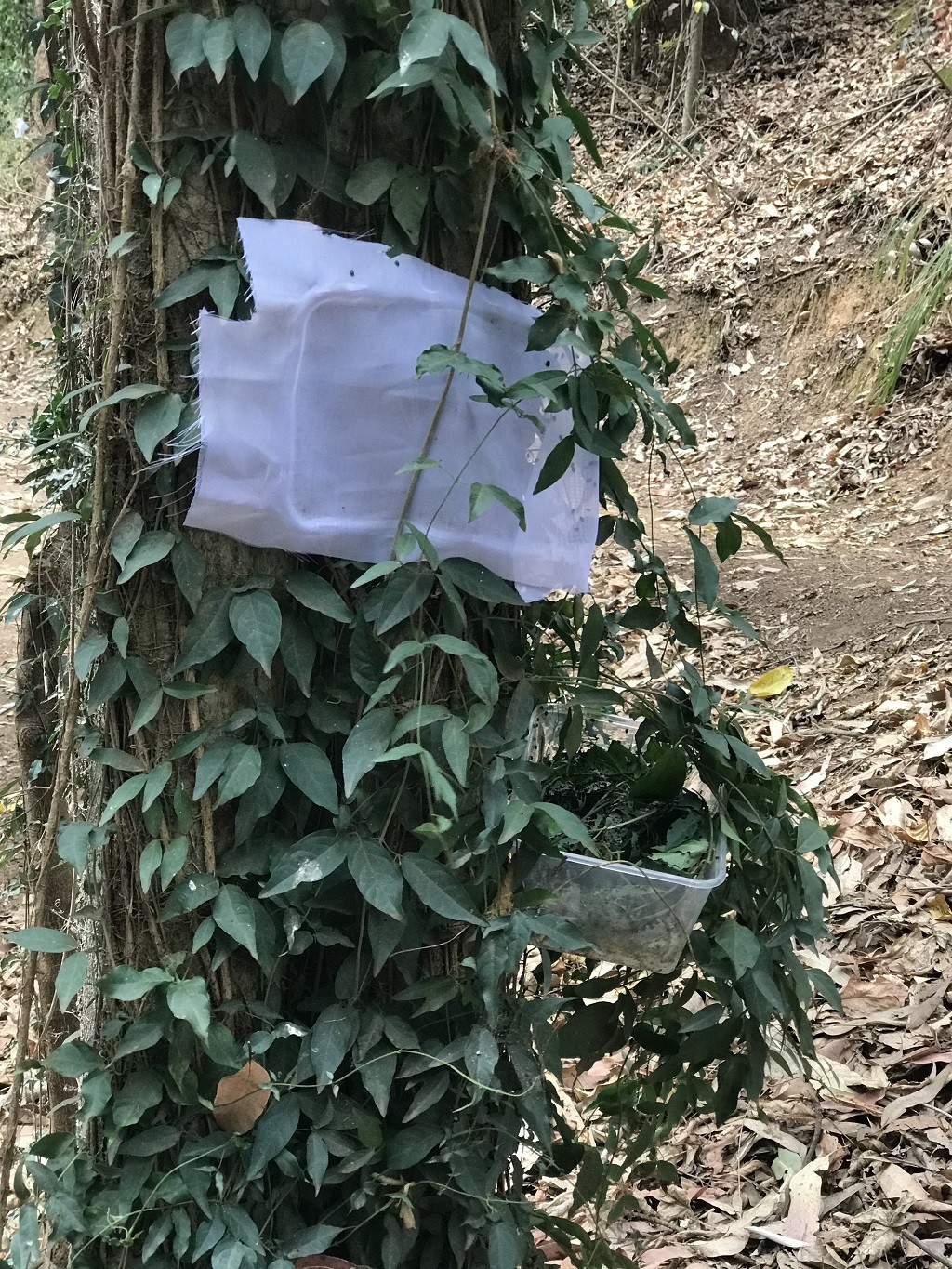Community
5 February, 2021
Tiny beetles an answer to the spread of cat's claw
Tiny beetles could be the answer to an invasive weed that has been found in the Tablelands, Kuranda and Cairns regions.

Terrain NRM and Biosecurity Queensland recently released leaf-mining jewel beetles near Atherton to see if they can stop the spread of cat’s claw creeper – a weed that smothers rainforest and changes the chemistry of soils.
Cat’s claw was introduced to Australia as an ornamental plant. Its spread began in the 1950s and it has since been found from Sydney to Cooktown.
Terrain NRM’s Regional Agricultural Landcare Facilitator Evizel Seymour said a biological control trial using leaf-mining jewel beetles had begun along Priors Creek near Atherton.
She said 1500 beetles were released at three sites.
“If these beetles establish themselves there, the plan is to use these spots as a nursery and release beetles at other known cat’s claw creeper sites on the Atherton Tablelands,’’ Ms Seymour said.

Leaf-mining beetles and their larvae feed on the creeper’s leaves. The South American beetle was introduced to Australia as a biological control in 2012 and is considered a “proven bio-control agent”. Its effectiveness hasn’t been tested yet in Far North Queensland, where there are smaller infestations of cat’s claw creeper.
Ms Seymour encouraged Far Northerners to keep a look-out for cat’s claw.
The creeper has woody climbing stems that cling to tree trunks and it competes with native plants and trees by forming a dense above-ground mat as well as underground reproductive tubers. Its many seeds are spread by the wind and water. Cat’s claw has a yellow flower.
“The areas it is most commonly found in are tropical rainforest and riversides. There have been recent detections at creeks and in backyards in the Atherton and Yungaburra areas, at Malanda Falls, Kuranda and Caravonica in Cairns.”
“We really want to catch the spread before it gets to a stage where it is smothering rainforest and riparian areas.”
This project is supported by Terrain NRM through funding from the Australian Government’s National Landcare Program.
For more information, phone Evizel Seymour on (07) 4043 8000.

Cat’s Claw: What it looks like
Large woody vine that climbs and creeps aggressively.
Flowers are yellow, bell-shaped, 4-10cm long, up to 10cm wide.
Leaves have 2 leaflets 5-25mm long, with 3-clawed tendril (cat's claw) 3-17mm long growing between them.
Pods are long, narrow, flat, contain many seeds.
Fruit is elongated, glossy green when young, dark brown as it matures, 15-50cm long, 8-12mm wide.
Each fruit has oblong seeds, 10-40mm long, 4-10mm wide.
Plant has vigorous root and tuber system.


